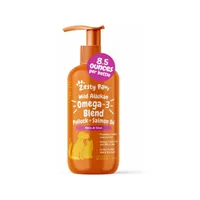4 ways to treat hair loss in dogs, recommended by a vet
Worried about your dog’s hair loss? Our vet can help
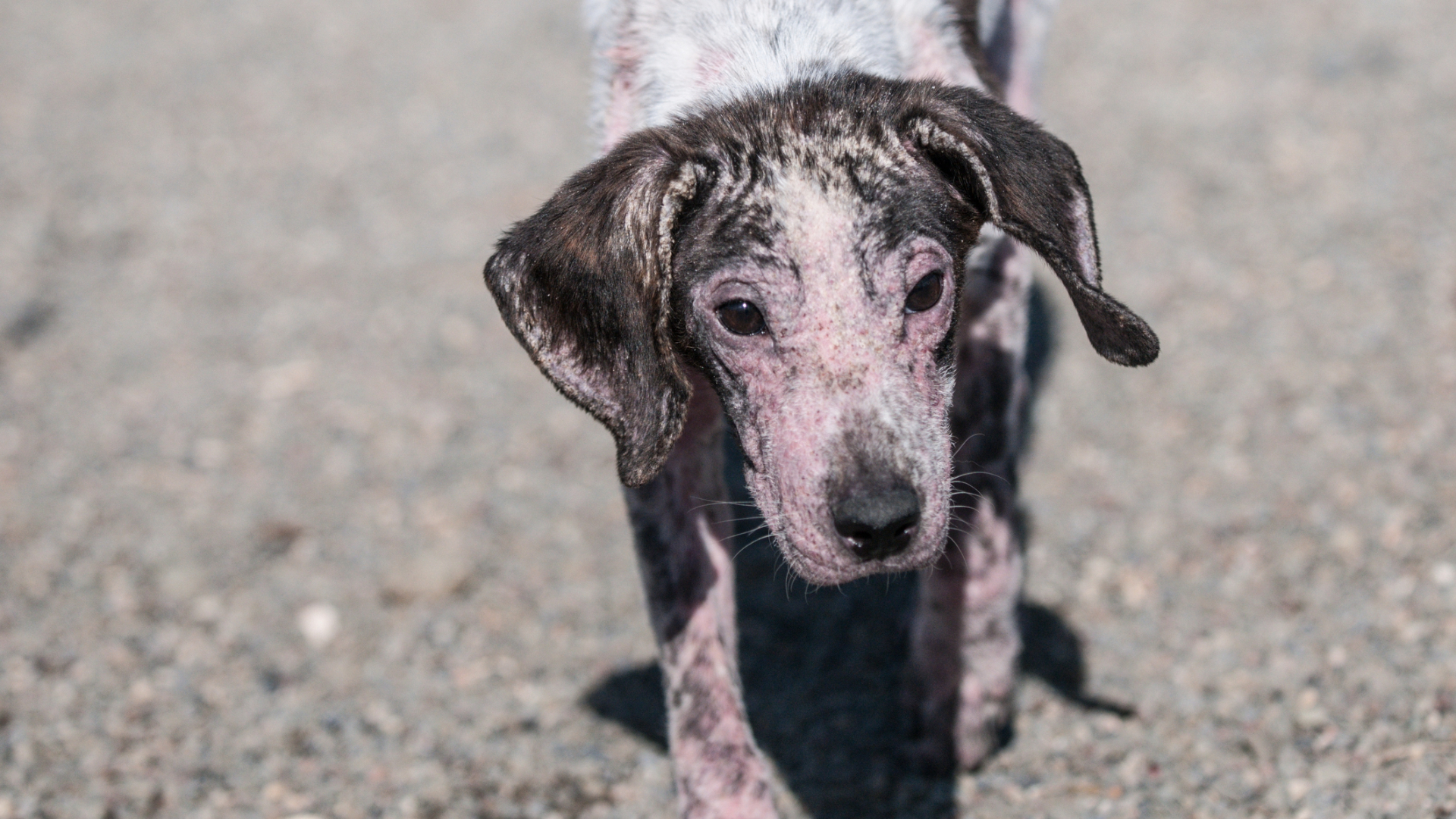
Hair loss in dogs is something I’ve seen countless times in my 14 years as a practicing vet. A dog’s coat is more than just for looks – it’s an important part of their health, providing warmth, protection, and even acting as a reflection of their overall wellbeing. When the fur starts to thin, develop bald patches, or fall out entirely, it can be worrying for owners, and understandably so.
As a vet, I know that hair loss (also called alopecia) can be a sign of anything from something as simple as seasonal shedding to more serious skin conditions or underlying illnesses. While some causes are straightforward and easily treated, others require thorough investigation and tailored treatment plans.
In this guide, I’ll explain what hair loss in dogs actually means, the symptoms to watch out for, the most common causes, and how it can be treated. I’ll also share advice on when to seek veterinary attention to make sure your dog stays as healthy – and as fluffy – as possible.
What is hair loss in dogs?
Hair loss in dogs refers to a partial or complete absence of hair in areas where it should normally grow. This can affect small patches of the body, larger areas, or even the entire coat, depending on the underlying cause. It may appear gradually over time and be so subtle that some owners will not even notice, or it can develop quite suddenly.
Unlike normal dog shedding, which happens as part of the coat’s natural growth cycle, alopecia is abnormal and usually indicates that something is interfering with hair growth or causing the hair to fall out prematurely. This can be linked to skin problems such as dermatitis, allergies, parasites, nutritional deficiencies, hormonal imbalances, or even behavioral issues.
Symptoms of hair loss in dogs
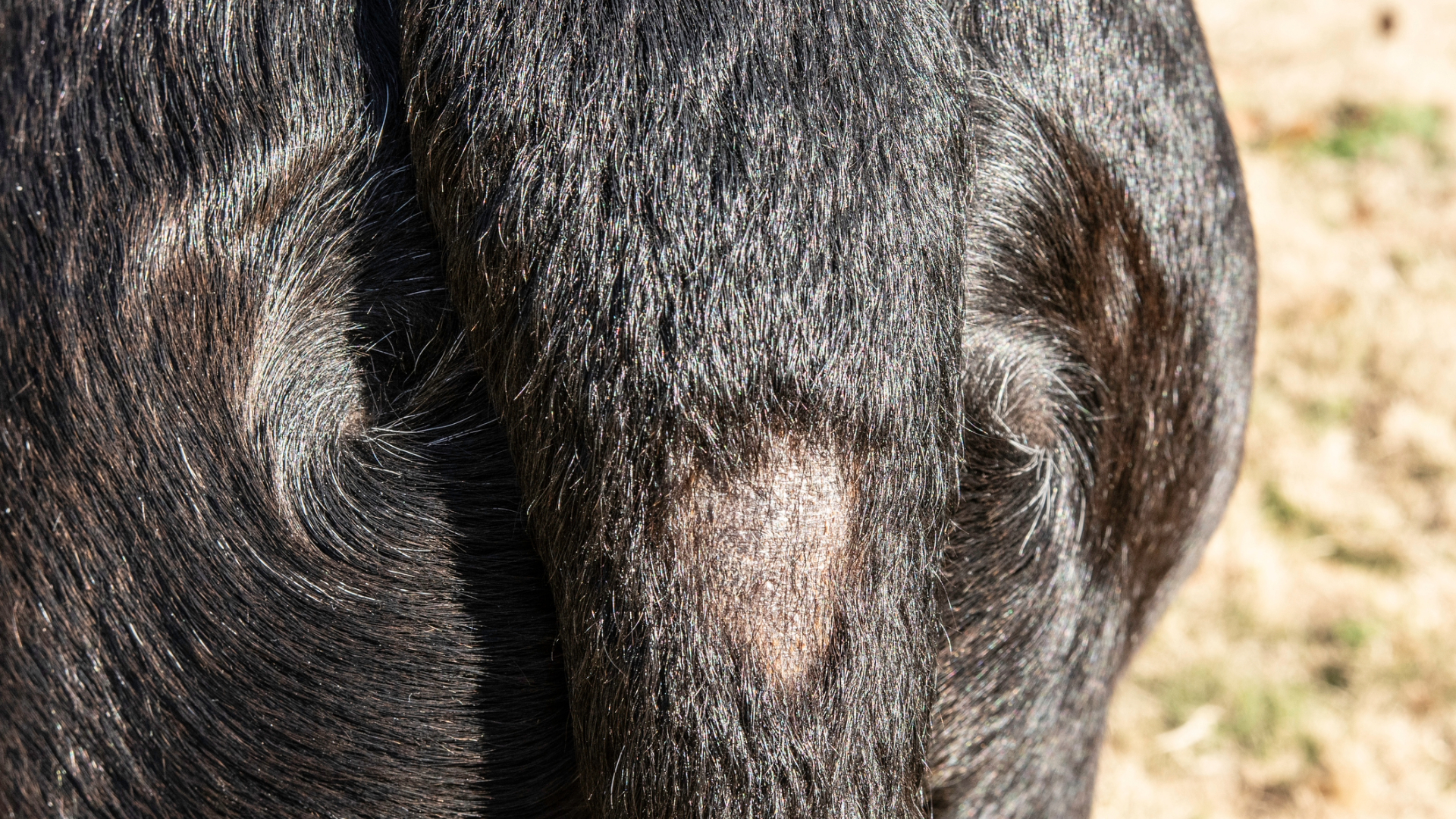
The signs of hair loss in dogs can vary depending on the cause, but common symptoms include:
- Bald patches on the skin: Clearly visible areas with no fur.
- Thinning fur: The coat can look less dense or full than normal.
- Red or inflamed skin: Irritation beneath the fur.
- Crusting, scaling, or scabs: Skin surface changes that are visible to owners at home.
- Itching and scratching: Sometimes intense and persistent.
- Excessive licking or chewing: Especially on affected areas.
- Changes in skin color: Either darkening (hyperpigmentation) or lightening (depigmentation).
Sometimes hair loss is accompanied by other signs such as lethargy, weight changes, or increased thirst, which can give clues to an underlying hormonal disorder.
Get the best advice, tips and top tech for your beloved Pets
Causes of hair loss in dogs
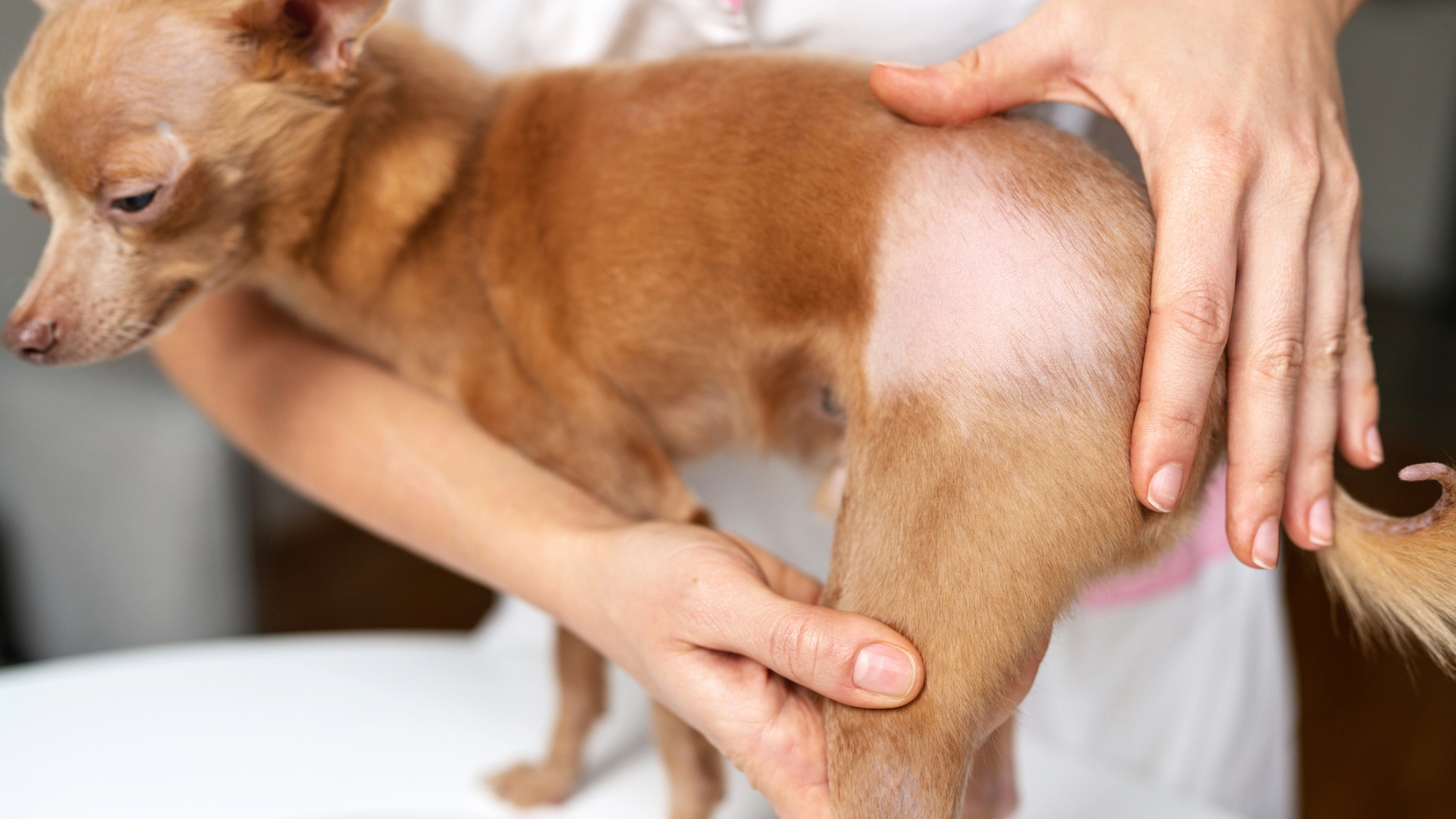
Hair loss in dogs can be caused by a wide variety of factors. The most common include:
- Allergies: Dogs can be allergic to environmental triggers such as pollen, dust mites, or mold, as well as certain food ingredients like beef, chicken, or dairy. Allergies often cause intense itching, leading to scratching, licking, and fur loss.
- Parasites: Fleas, mange mites (sarcoptic or demodectic), and lice can all irritate the skin, triggering scratching and chewing that leads to bald patches. Some parasites burrow into the skin, directly damaging hair follicles.
- Skin infections: Bacterial infections (such as staphylococcal dermatitis) or fungal infections like ringworm can cause patchy hair loss, scabs, and redness. Infections may occur on their own or as a secondary skin issue due to damage from scratching or parasites.
- Hormonal imbalances: Conditions such as hypothyroidism (low thyroid hormone), Cushing’s disease (excess cortisol), and sex hormone imbalances can disrupt the hair growth cycle, leading to symmetrical hair loss and changes to the coat texture.
- Poor nutrition: A diet lacking in essential fatty acids, protein, vitamins, or minerals can affect coat quality and contribute to gradual hair thinning. Always ensure you are feeding the best dog food you can.
- Stress or behavioral causes: Some dogs over-groom, chew, or scratch themselves due to stress, anxiety, or boredom, which can result in self-inflicted alopecia.
- Seasonal or breed-related shedding: Certain heavy-shedding breeds, such as Huskies or German Shepherds, have heavy seasonal molts. While this isn’t true alopecia, it can look alarming to an unprepared owner.
Treatment of hair loss in dogs
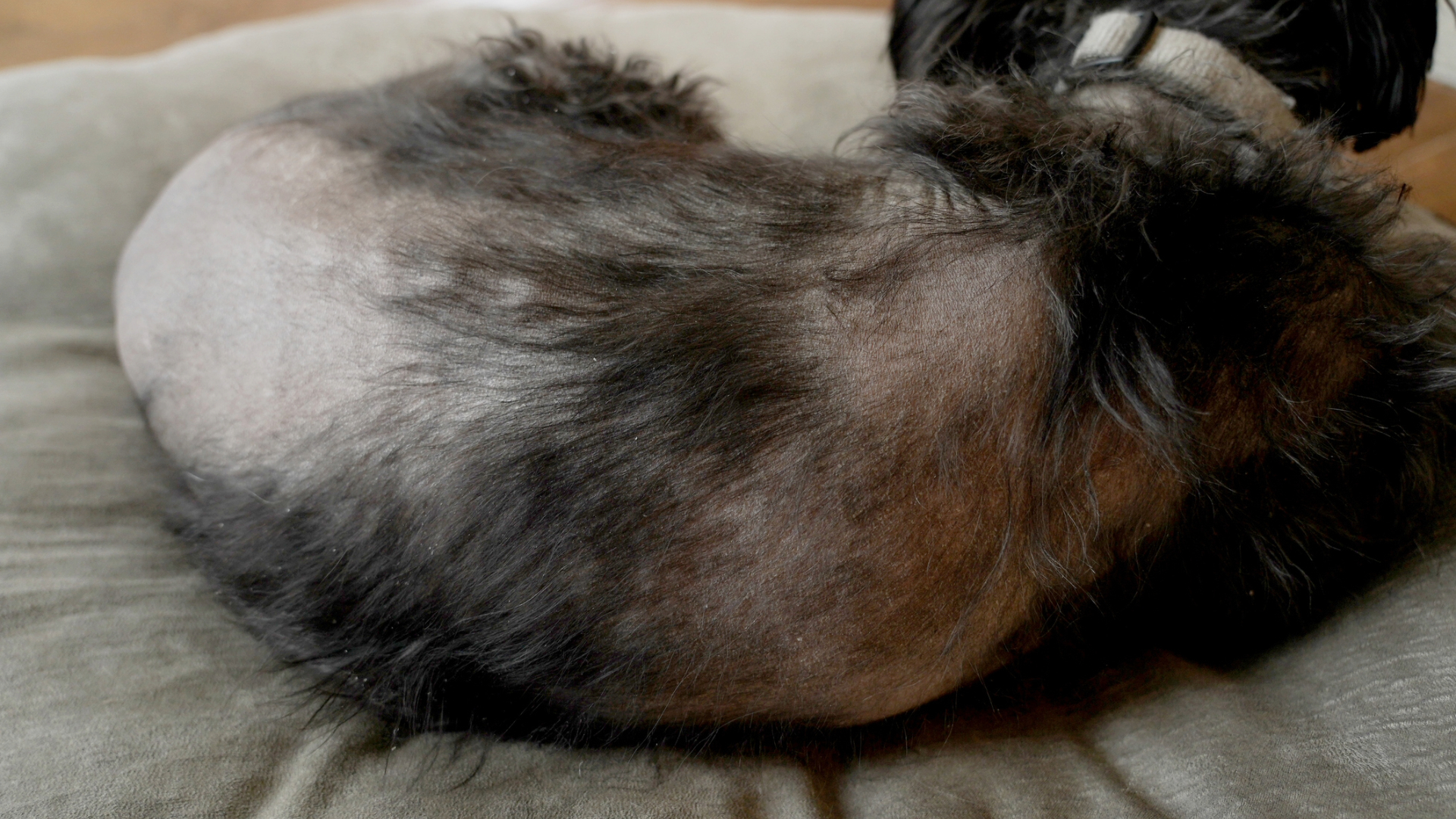
Treatment depends entirely on the cause, so an accurate diagnosis is essential. Your vet will start by taking a full clinical history, they will then examine your dog’s skin and coat, and possibly running tests such as skin scrapings, hair plucks, blood tests, or allergy testing.
- Treating underlying conditions: Allergies need to be managed with dietary changes, medication, or in some cases immunotherapy. Parasites need to be treated using prescription flea, tick, and mite control products. Infections are targeted with antibiotics, antifungals, or medicated shampoos. Hormonal disorders require long-term medication and regular monitoring.
- Nutritional support: Switching to a complete, balanced diet and adding omega-3 and omega-6 fatty acids can help restore coat health and promote healthy regrowth.
- Skin care: Medicated shampoos, moisturizing sprays, and topical ointments can soothe itching and reduce the risk of secondary infection.
- Behavioral support: If stress or boredom is a factor, providing enrichment activities, behavior training, and in some cases calming supplements or medication can help.
Zesty Paws Wild Alaskan Omega-3 Blend | Amazon
Containing wild Alaskan salmon that's rich in omega-3, this supplement supports skin and coat health while boosting the immune system.
When should I be concerned about my dog’s hair loss?
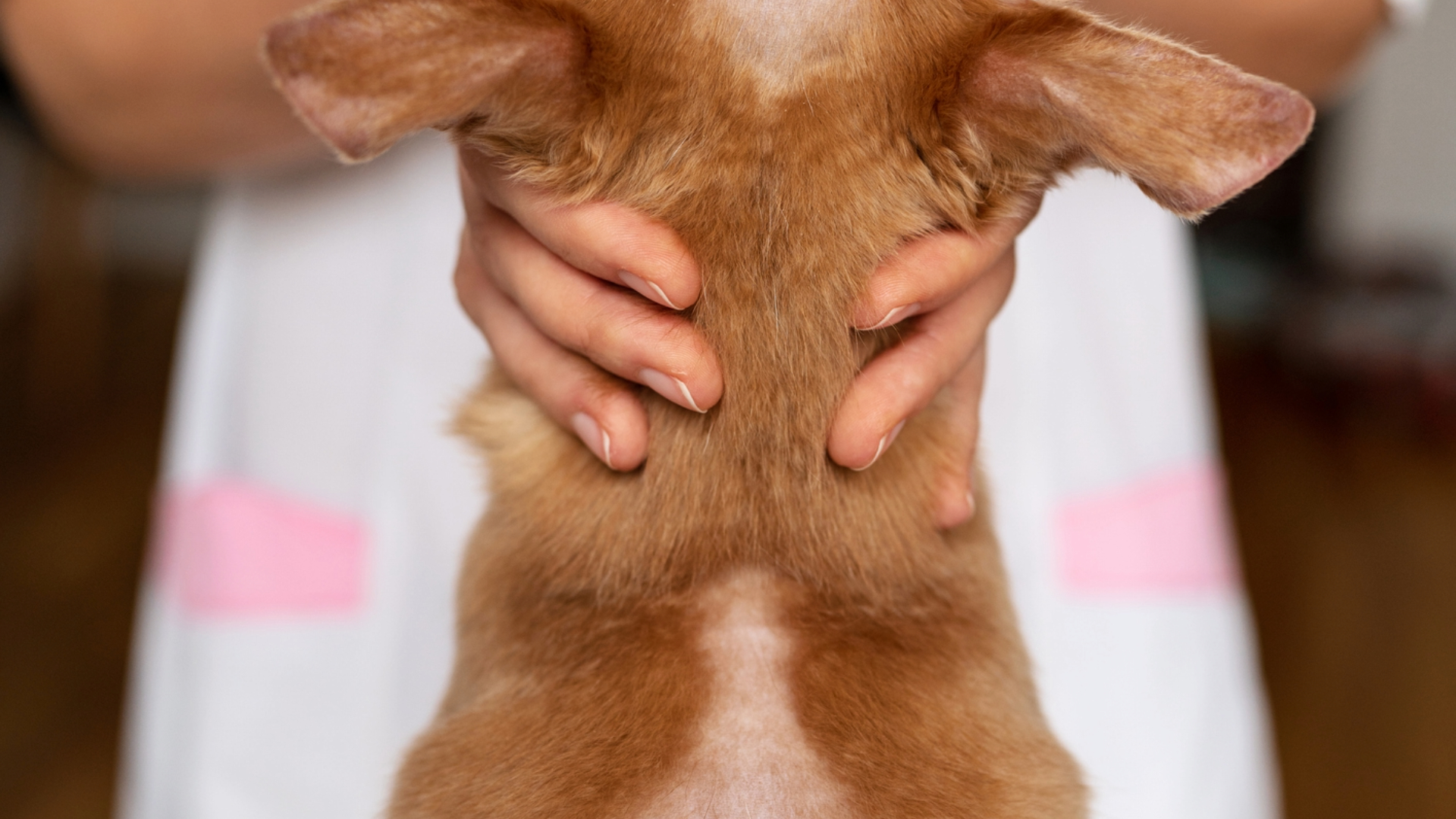
You should book a veterinary appointment if:
- The hair loss is sudden or rapidly spreading.
- The skin looks sore, red, crusty, or infected.
- Your dog is scratching, licking, or chewing excessively.
- There are distinct bald spots rather than generalised shedding.
- Other symptoms are present, such as changes in appetite, thirst, weight, or behaviour.
While mild seasonal shedding is normal, any unexplained hair loss or persistent dog skin problems should always be investigated. Early diagnosis means faster treatment, better comfort for your dog, and often a quicker return to a shiny, healthy coat.
Hair loss in dogs can be unsettling, but with prompt veterinary assessment and the right treatment, most cases can be successfully managed. Keeping up with parasite control, feeding a balanced diet, and regularly checking your dog’s coat will help prevent many problems – and keep your dog looking and feeling their best.
Read next: Skin allergies in dogs and hot spots on dogs
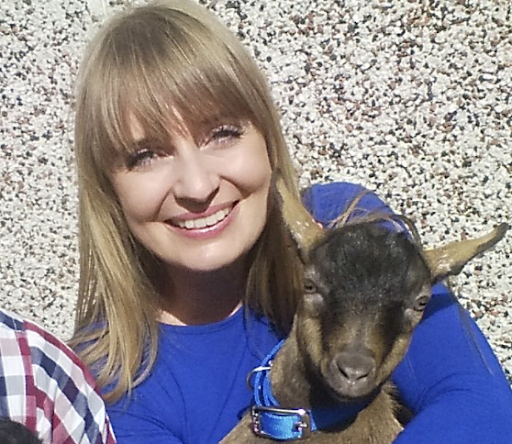
Emma Chandley is a vet with 14 years of experience and has a keen interest in surgery. After graduating from the Royal Vet College in London in 2011, she achieved a postgraduate certificate in small animal surgery from the British Small Animal Veterinary Association and Nottingham Trent University. She was then awarded advanced practitioner status in the same discipline by The Royal College of Veterinary Surgeons. She has a black Labrador and two pygmy goats at home.
Edited by Megan Milstead.
This feature was last updated in August 2025 by Emma Chandley.
Emma Chandley is a vet with 14 years of experience and has a keen interest in surgery. After graduating from the Royal Vet College in London in 2011, she achieved a postgraduate certificate in small animal surgery from the British Small Animal Veterinary Association and Nottingham Trent University. She was then awarded advanced practitioner status in the same discipline by The Royal College of Veterinary Surgeons. She has a black Labrador and two pygmy goats at home.
